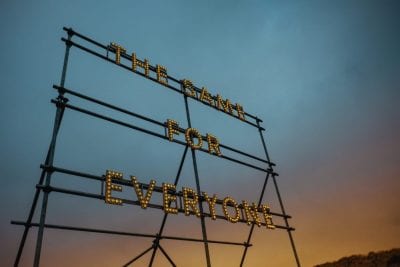When the Internet first became widely available to the public in the 1990’s, it was like another frontier of human experience was opening up before our eyes. We could now send instant messages to people across the street, or across the world. We could engage in business without leaving our homes. We could discover new things with the click of a button.
Since then, the World Wide Web has become more prevalent, more complicated, and more necessary to our daily existence than ever before. Many people view Internet access as an absolute necessity, whether at home, at work, or on vacation; and in many cases this viewpoint is understandable, even justified.
However, people with disabilities are often excluded from some of the Internet’s wonderful benefits. For example, a deaf person will not be able to fully comprehend an online instructional video which has no caption or transcription options. An elderly person may have trouble with websites that use extremely small fonts, or complicated layouts. And a blind user, without assistance, would have a very difficult time making use of the Internet.
With that being said, how can we begin to make the Web a more inclusive place? And why is that so important?
Ways to Foster Inclusion
Web accessibility begins at the ground level of design, and it involves every phase of creating and using websites. The following are some ways inclusive practices can be implemented:
- Follow WAI guidelines. WAI, or the Web Accessibility Initiative, is an effort by the World Wide Web Consortium to promote and standardize best practices for inclusive design. WAI provides design standards that are inclusive for those with physical, auditory, visual, cognitive, learning, and other disabilities.
- Utilize alternative text as an integral part of the design process. Oftentimes videos, audio recordings, images, and graphics can be a source of frustration for those with disabilities. Providing alt-text for each visual and auditory feature can truly help disabled ones understand the information being presented, as well as appreciate the “flavor” or “vibe” of the content.
- Give the option for audio description. Along with the alt-text, designing an option for audio description of text, images, or other visual features can greatly enhance the website’s accessibility for blind or color-challenged users.
- Use simple, easy to follow layouts. To elderly ones, or those who struggle with cognitive or learning disabilities, it can be a real challenge to follow the “flow” of a website when its layout is overly complicated. On the other hand, large, clear navigation bar options and simple layouts will make the web browsing experience much less stressful.
- Plan for incompatibility. Disabled persons may have older, even legacy versions of web browsers. If so, they will not be able to access all of a website’s features like other users can. With that in mind, it is good to always be mindful of possible incompatibility issues, and provide alternative renderings or at least explanations as part of the site’s metadata.
- Evaluate the level of accessibility. It is hard to know what others are going through if we haven’t spent some time walking in their shoes, so to speak. Be sure to evaluate your website’s current accessibility features, and see where improvements can be made.
The Importance of Inclusive Design
It is true that inclusive design can be a driver for company growth, and open up new, perhaps even unexplored markets. However, the main reason why inclusive design is so important lies in the fact that disabled persons can be valuable contributors to society, just like anyone else. In fact, those who are challenged by disabilities often find creative and innovative solutions to the problems that they face; and this benefits everyone.
If you would like to learn more about how your company’s web presence can become compliant with federal standards, please reach out to us at MAB Accessibility today. Don’t wait. Let’s work together to open up that new frontier of human experience for those who are waiting on the threshold.
